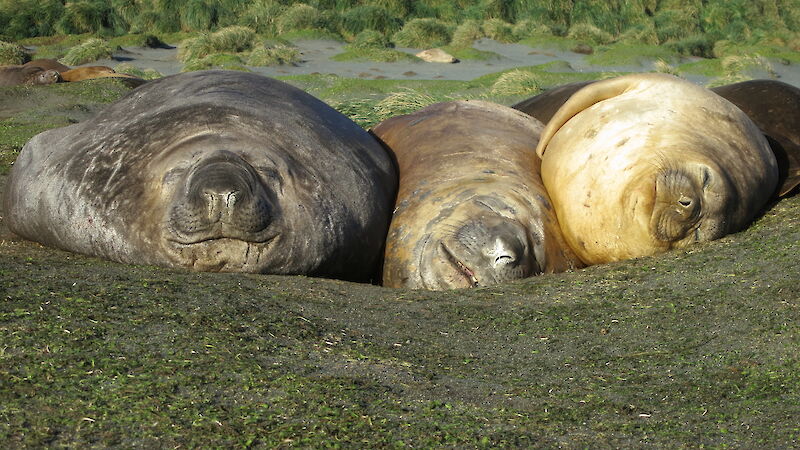How Does The Physical Adaptation Of Blubber Assist Animals In Surviving The Harsh Winter?
Antarctic animals are exposed to some of the coldest environments on earth. These animals have physical adaptions (generally evolved over many generations) and patterns of behaviour that assist them survive the extreme conditions.

Physical adaptations
Thick, windproof or waterproof coats
Many Antarctic animals accept a windproof or waterproof coat.
Emperor penguins are a very good case. These birds have 4 layers of scale-similar feathers. The layers overlap each other to form a good protection from the current of air, fifty-fifty in blizzard atmospheric condition.
Fatty (or blubber) layers
Whales, seals and some penguins accept thick layers of fat (or blubber). These fat layers act like insulation, trapping torso estrus in. The outcome is like wrapping yourself in a coating.
When blood circulates shut to the skin, precious body heat is lost. Some animals tin selectively reduce the menstruum of claret to their blubber layers. This reduces the amount of energy it takes to stay warm by keeping blood further away from the skin surface.
Blubber layers can too be used as an energy reserve. Male elephant seals can live off their fat reserves during summertime.
Pocket-sized extremities
An extremity is a limb or appendage of the body. In humans, our easily and feet count equally extremities. These are often the kickoff places to feel the common cold. The same applies for animals.
Emperor penguins accept small extremities. They have a very small bill and flippers, which ways less blood is required for these areas. Keeping blood menstruation away from the skin surface means that less body oestrus is lost.
Specialised adaptations
Emperor penguins have special nasal chambers which recover heat lost through breathing. They as well have closely aligned veins and arteries. These adaptions enable emperor penguins to recycle their ain trunk heat.
Antarctic krill must survive the dark wintertime months when food is scarce. They practice this very successfully, surviving more than 200 days of starvation. They do this by shrinking their body size. 'Downsizing' enables Antarctic krill to use their own body proteins as a source of fuel. All species of krill seem to share this adaptation.
Behavioural adaptations
Antarctic animals have unique behavioural adaptations that help them survive the harsh winter.
Emperor penguins course large huddles. Huddles allow them to share body warmth, and shelters many of the penguins from the air current. The huddle constantly moves so that all the penguins have a turn in the middle. Huddling can reduce heat loss past up to 50%.
on
Source: https://www.antarctica.gov.au/about-antarctica/animals/adapting-to-the-cold/
Posted by: hendersonburses.blogspot.com

0 Response to "How Does The Physical Adaptation Of Blubber Assist Animals In Surviving The Harsh Winter?"
Post a Comment